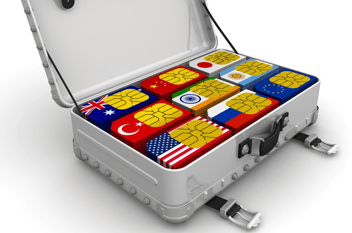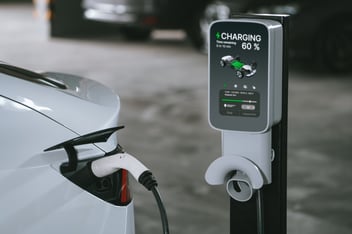

What you need to know about broadcasting connectivity
The first live broadcast was made in 1929 by the BBC. And today, nearly a century later, live broadcasts are as popular as ever. Whether it's for sports, news, daily shows or one-off, special events: live coverage is a great way to unite audiences and bring them closer to the action.
But whilst the popularity of live broadcasts remains high, the technology behind it has changed significantly over time.
Today, there are more options for streaming live content than ever before and choosing the right broadcasting connectivity is an absolute must.
So, let’s break down exactly what connection you will require for your live broadcasts.
The available broadcasting connectivity options
Satellite
One of the most popular facilitators of live broadcasting is via satellite, which has several advantages.
Namely, satellite connectivity is a very universal solution.
There are several satellite providers in every country, and as a result, sending out your broadcast globally is usually very simple and direct.
That said, satellite is also one of the most expensive ways to send broadcasts, as the technology involved is both costly and very complex.
Additionally, the delay on satellite broadcasts can belong, and limited bandwidth can make it rather challenging.
Wi-Fi
Arguably the simplest means of live broadcasting, Wi-Fi has the benefit of being very low-cost and is easy to implement.
The bandwidth of Wi-Fi is also very high, which makes higher quality content easier to stream.
There are some drawbacks to Wi-Fi that you might want to consider, however.
For example, Wi-Fi usually has a very short range. This means that if your live stream equipment is spread out across a large space, you’ll need multiple networks to keep everything adequately connected. And as a result of this limited range, you’re also likely to experience higher delays in content delivery, too.
3G, 4G, and LTE
Cellular connectivity options like 3G, 4G, and LTE are some of the lesser-used means of live broadcasts. Despite this, they can offer a brilliant solution that is certainly worth considering.
Cellular has the benefit of being extremely global, covering vast regions with several overlapping networks across the world. This means that you never have to depend on a single network to get your broadcast to your audience.
And what’s more, cellular networks also have an extremely low latency and offer low jitter, too. This, in turn, ensures that your audience will seamlessly receive a high quality and real-time viewing experience, which is pivotal to delivering a successful live stream.
Additional connectivity factors to Consider:
Steered vs. Non-Steered Connectivity
- Steered Network Connectivity
When looking at global network options within cellular, there are two main types of connectivity: steered and non-steered.
Global network solutions use agreements between a primary network (your provider) and secondary networks (your provider's partners). These partners provide you with connectivity, even when you are outside the range of your primary partner's network.
When this type of connectivity is steered, your broadcasting devices will be configured to stay on your primary network as much as possible; even if there is a stronger partner network available.
- Non-steered Network Connectivity
On the other hand, a non-steered connectivity solution is therefore quite the contrary. As opposed to your devices being configured to stay connected to the primary network as much as possible, non-steered devices will always connect to the strongest network available.
This means that choosing a non-steered connectivity provider will offer you the strongest connection available for your broadcasting at all times and in all locations.
Non-steered connectivity providers prioritise your signal strength over customers on their networks; providing your broadcasting with true and reliable global connectivity, as a result.
This gives you the freedom to select whatever network preference works best for you, rather than being presented with restricting, predetermined options.
Network Congestion
Finally, like any large-scale network needs, live broadcasters will also need to consider the issue of network congestion.
Put simply, this refers to when there are so many users on your network, that it overtakes your bandwidth, slows down your network speeds, and potentially lowers the quality of your broadcast.
This is especially problematic with live broadcasts, as you usually can't interrupt what is happening to resolve the networking issue due to their ‘real-time’ nature.
It is therefore very important for live broadcasters to avoid congested networks. And to do so, it is worth using an APN.
In short, an APN is a private network that can only be used by the broadcaster and their audience. Cellular networks use APNs natively, again making them a great option for broadcasters with a large audience.
Broadcasting connectivity with Velos IoT Broadcast
As an established cellular connectivity provider, here at Velos IoT Broadcast, we are experienced in offering powerful 3G, 4G, and LTE network solutions to broadcasters across the globe.
Thanks to 500+ direct /or global roaming agreements with other telecoms providers, we can offer broadcasters a truly global, non-steered connectivity solution. This allows you to reach your audience wherever they, or you, may be at any given time.
And as a non-steered solution, you can choose your own network preferences, too. We put the power to control your broadcasting connectivity in your hands. And all off that, on a single SIM.
What’s more, our private APNs will also ensure that the only people using your network are you and your audience; offering a fully secure and exclusive broadcasting connectivity solution.
Conclusion
Live broadcasting is as popular as it's ever been, and with new IoT and connectivity options available, the ways to reach your audience are truly limitless.
And if you're looking for a secure, reliable, and simple connectivity solution for your broadcasting needs, consider partnering with us at Velos IoT.
 We’ve also prepared a quick guide to broadcasting connectivity to provide you with an in-depth view on how to choose the ideal connectivity for your broadcasting needs. Get a free copy here.
We’ve also prepared a quick guide to broadcasting connectivity to provide you with an in-depth view on how to choose the ideal connectivity for your broadcasting needs. Get a free copy here.
Speak to a Velos IoT expert
Related articles


Compare global roaming SIM card - Steered vs. Non-Steered
Today you will find many companies selling global multi-network roaming SIM cards. These SIM cards...

How Does an IoT-Connected EV Charging Station Work?
The electric vehicle (EV) revolution is in full swing, rapidly reshaping the automotive industry....
